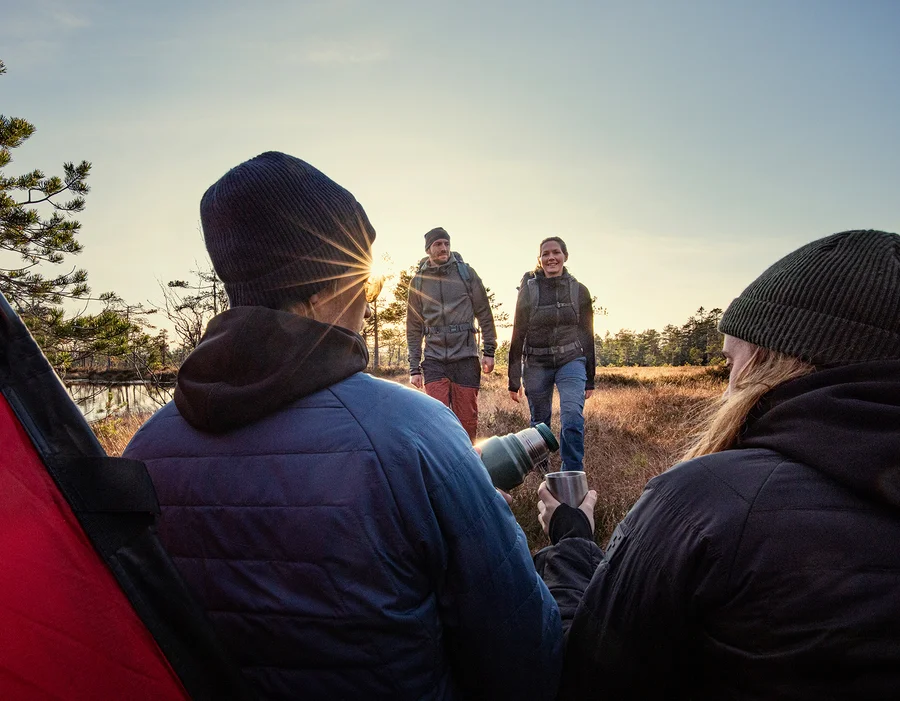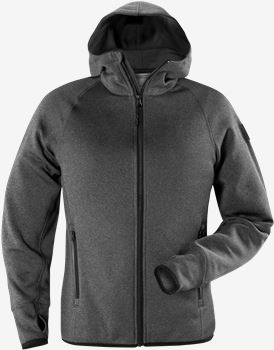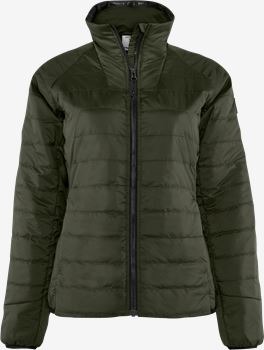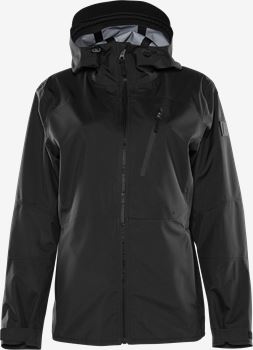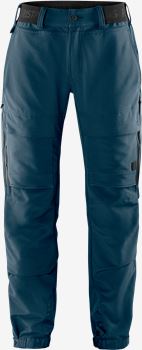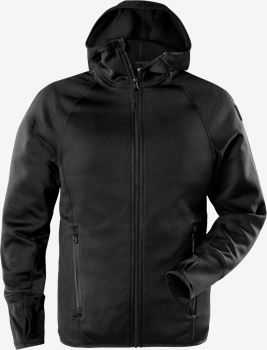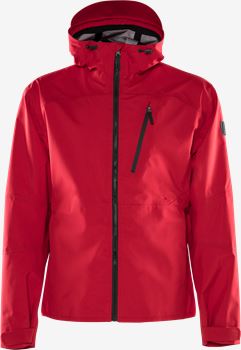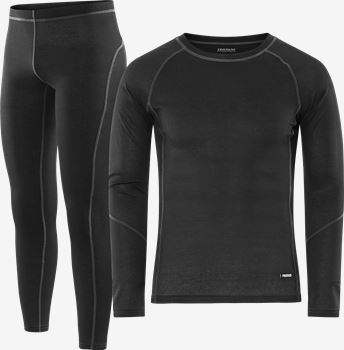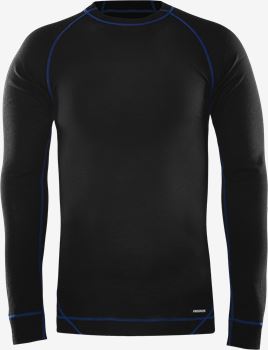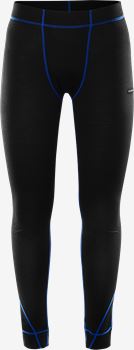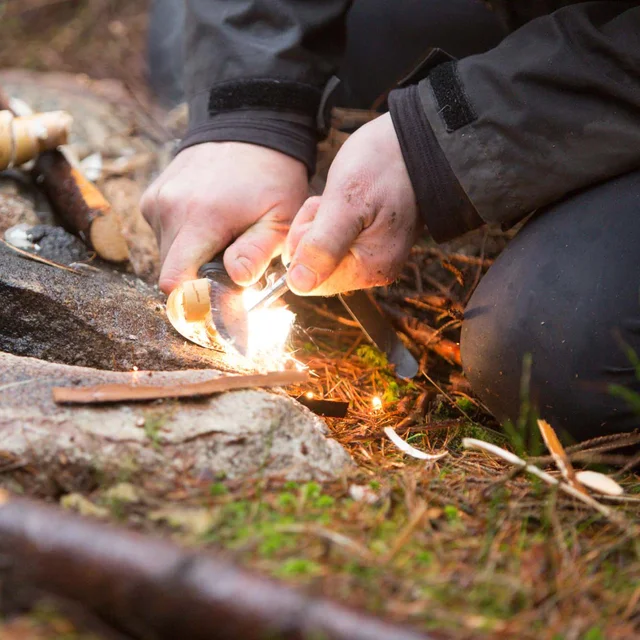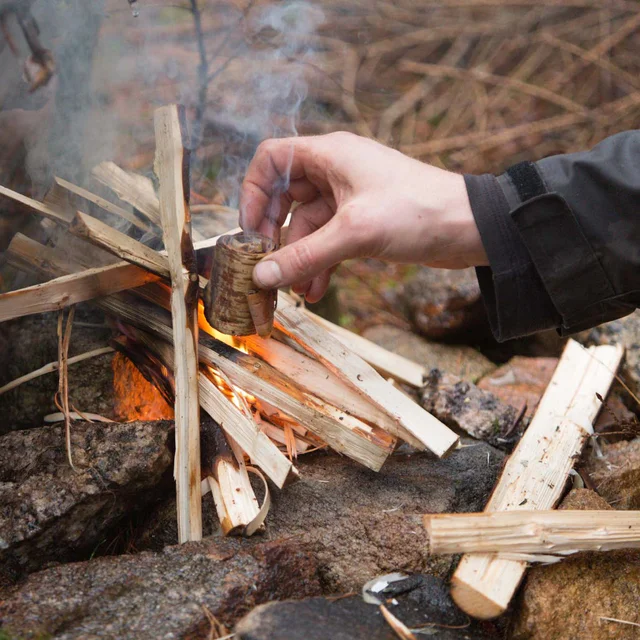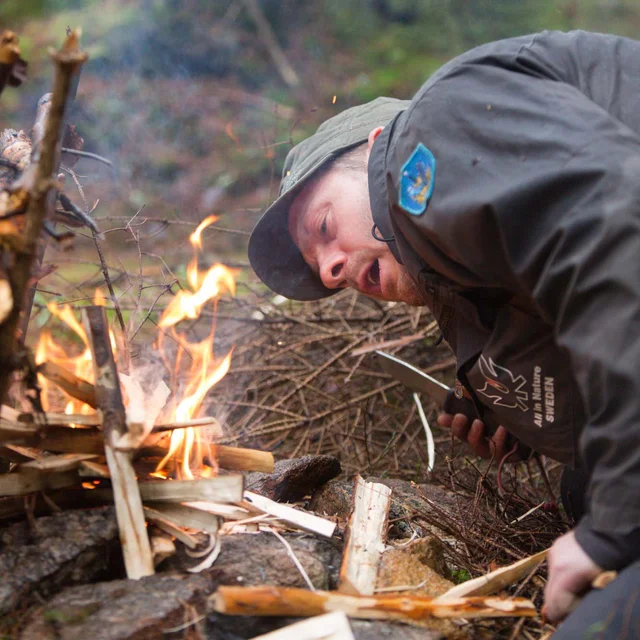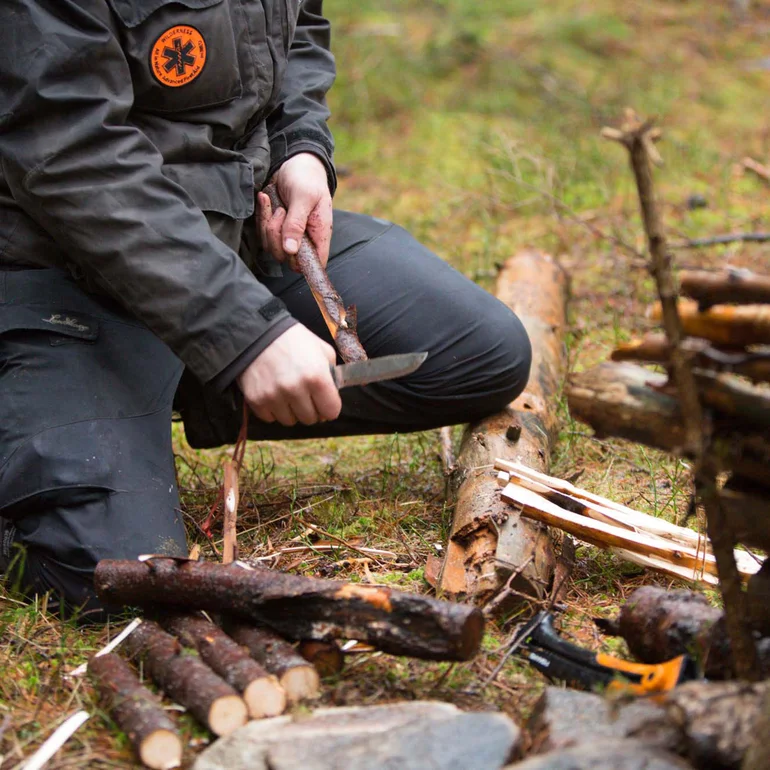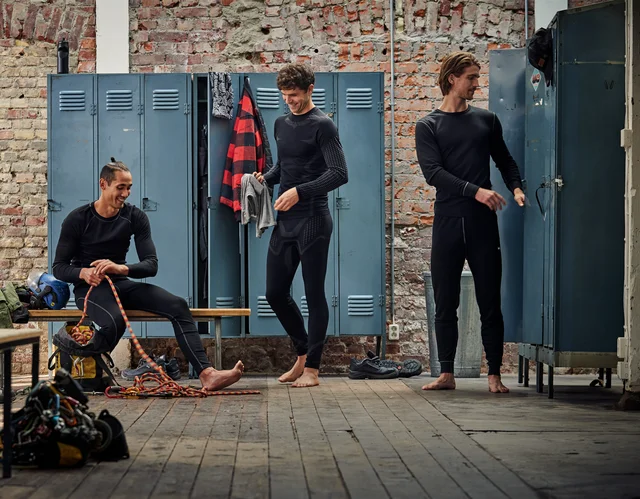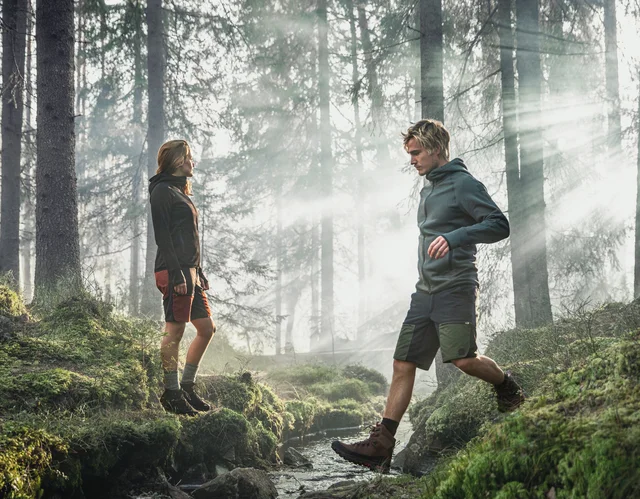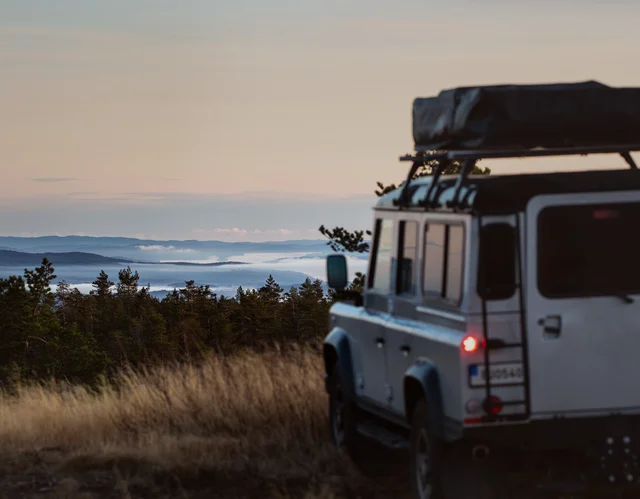
kledd for eventyr
Å dra ut for å nyte naturen er noe av det beste man kan gjøre for å slappe av og komme vekk fra hverdagens stress. Her er våre beste tips til hvordan du kan være komfortabel når du er på tur, samt hva du bør tenke på for at eventyret skal bli så godt og trygt som mulig.
Når du er utendørs, er det naturlig at du blir varm og svett. Når du tar en pause, absorberer klærne fuktigheten fra kroppen din, og risikoen for å fryse øker. Hvis du kler deg med flere lag, blir det enklere å kontrollere kroppsvarmen ved å legge til eller fjerne lag.
Lag 1
Avhengig av sesong, vær og sted kan det være lurt å bruke et innvendig lag både om sommeren og om vinteren. Enten et tynnere innvendig lag av syntetisk materiale som har som hovedoppgave å transportere fuktighet bort fra kroppen, eller et lag av merinoull hvis du ønsker ekstra varme.
Lag 2
Som det neste laget på underkroppen anbefaler vi en Outdoor bukse. På overkroppen er en genser av syntetisk materiale eller fleece et godt valg, siden materialet transporterer bort fuktighet. Hvis det er kaldt ute, er det lurt å ta på seg en ekstra, tykkere genser eller en tynnere fôret jakke.
Lag 3
For ytterlaget kan du velge en skalljakke, og eventuelt en skallbukse ved behov. De tåler vind og vann, og de beskytter deg mot været. Det er alltid lurt å ha med seg hansker, en lue og et skjerf. Selv om det er varmt om dagen, kan temperaturen falle på kvelden og natten, og vinden kan være kald – spesielt i høyden, ved vann eller på åpne steder.
Ingen eventyr er morsomme med gnagsår. Bruk de nye skoene eller støvlene på kortere turer før du legger ut på lengre eventyr. For å være på den sikre siden kan du bruke to par sokker i skoene, slik at friksjonen dempes. Bytt umiddelbart hvis du blir våt, og husk å pakke gnagsårplaster i tilfelle.
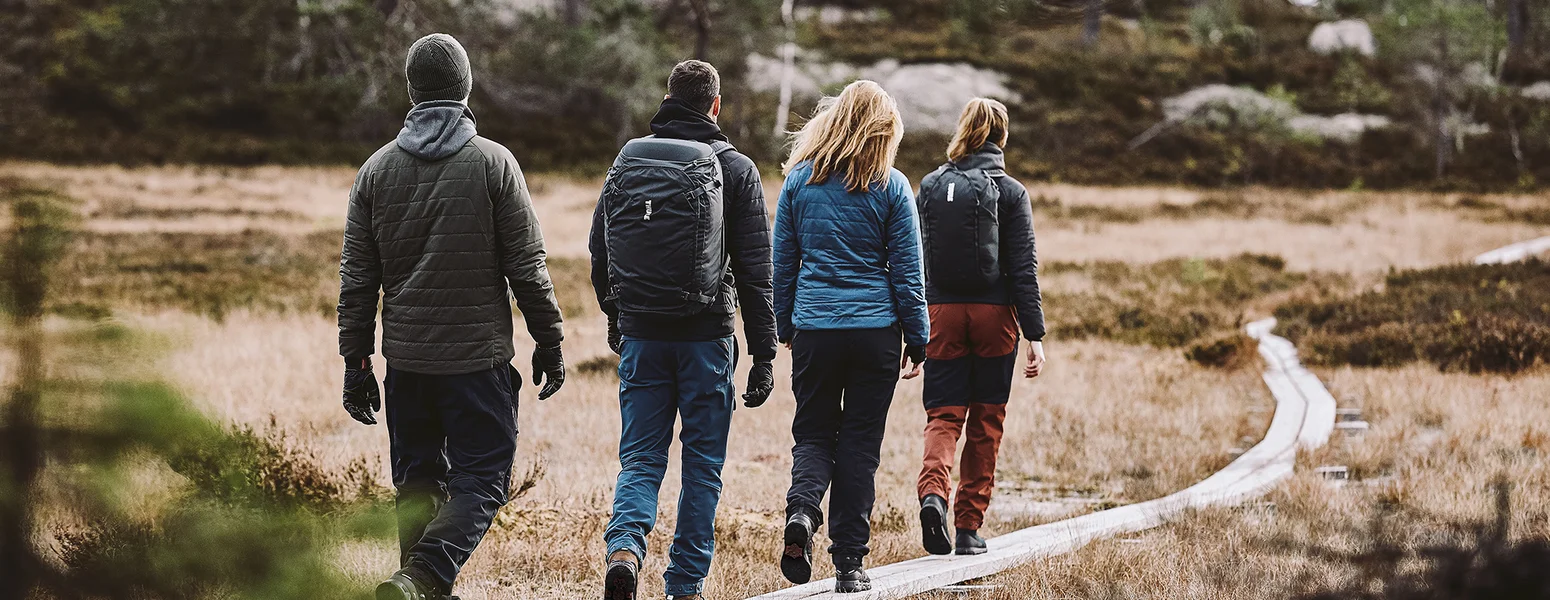
Ryggsekk og bagasje er naturligvis viktig, og avhengig av hva du har planlagt å gjøre, må du ha med deg forskjellige mengder bagasje. Et generelt pakketips er å pakke myke og lette ting nederst i ryggsekken, og tyngre ting så nær kroppen som mulig. I tilfelle regn kan det også være lurt å ha et regntrekk til ryggsekken, slik at du unngår at tingene dine blir våte.
Husk å ha regntøy og snacks lett tilgjengelig. Hvis du deler bagasjen i bagger, blir det enklere å finne det du trenger. Storm eller sult kan komme plutselig, og det kan skader også – så husk førstehjelpsutstyret. Sist, men ikke minst – ikke pakk for tungt. Husk at du må klare å bære med deg alt.
Mat og drikke
Hvis eventyret varer i mange timer – og kanskje til og med flere dager – må du ta med deg mat til frokost, lunsj og middag, pluss snacks. Ved å planlegge hva du skal spise på turen og unngå å pakke med deg unødvendige ting, kan du spare noen kilo. Det er lurt å ha med seg hermetikk, siden den holder lenge, men boksene er tunge, selv når de er tomme, og du må alltid planlegge slik at du tar med deg søppelet ditt. Fjern unødvendig papp, unngå glasskrukker, og finn ut om du kan fylle vannflasker underveis, slik at du slipper den vekten. Men husk å ta med deg nok!
Det finnes mange tørkede/frysetørkede retter som du bare trenger å tilsette vann til for å tilberede. Velg sauser/supper i pulverform eller i esker, og spis dem sammen med couscous, pasta og nudler. Et godt tips er å veie opp nøyaktige porsjoner, slik at du slipper å bære med deg mat du ikke kommer til å spise. Hvis du liker grøt, er det et veldig godt alternativ. Hvis det er lov å plukke bær der du er, kan du enkelt finne litt ekstra smak underveis. Du kan også ta med deg blåbærsuppepulver som alternativ til syltetøy. Revet parmesan holder seg i flere dager i ryggsekken og kan ta de fleste retter til et nytt nivå. Et hvitløksfedd eller buljongterninger veier nesten ingenting. Og husk krydder!
I tillegg til maten trenger du et stormkjøkken, en kopp til drikke og mat, bestikk, en skarp kniv og miljøvennlig oppvaskmiddel, samt tennstål, vanntett lighter eller fyrstikker i for eksempel en plastbeholder.
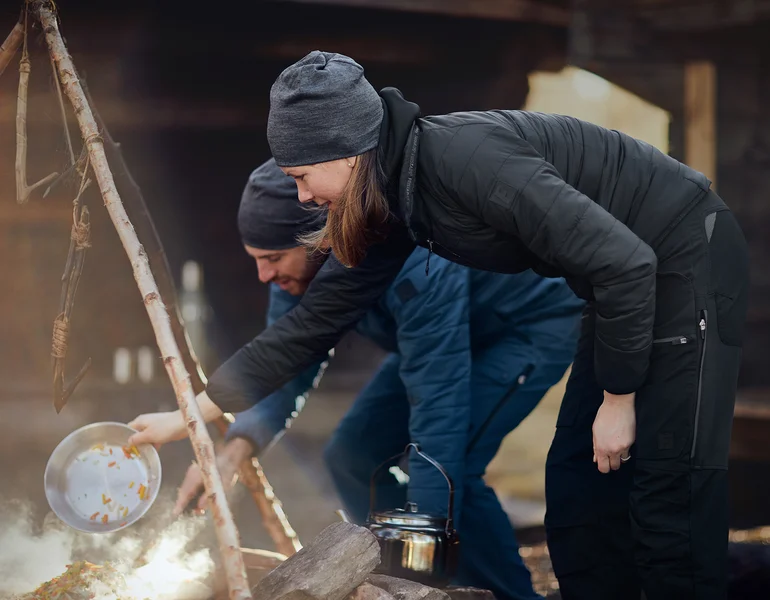
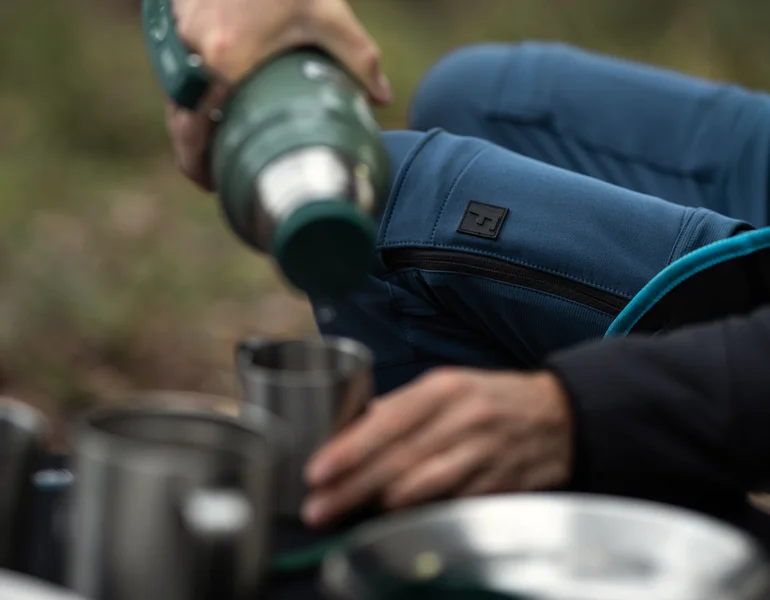
I mange naturreservater og friluftsområder kan du finne ved i nærheten av bålplassen, gapahuken eller hytta. Det er lurt å ha med en kniv, slik at du kan dele opp større vedskier i mindre biter som du kan bruke til å tenne bålet. Nedenfor finner du veiledningen vår til hvordan du lager bål – trinn for trinn. Men husk at du ikke nødvendigvis har lov til å finne ved i naturen. Du må alltid undersøke hvilke regler som gjelder der du er, og du må også kontrollere at det ikke er bålforbud.
More content for you:
Weather you prefer whool or function materiales we have base layers that meets your needs.
Durable outdoor garments for big adventures with small impact on the environment.
Get inpired by stories from passionate outdoor people telling us why nature is so important for them.

